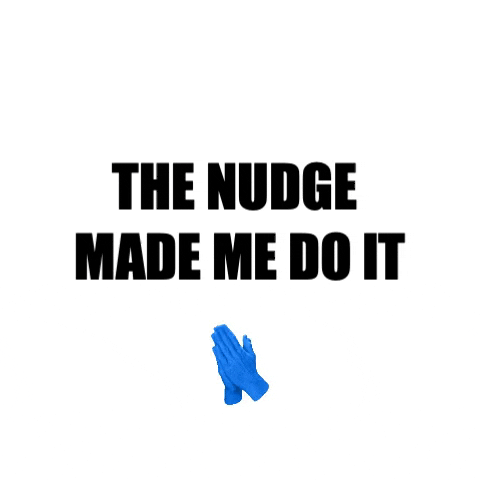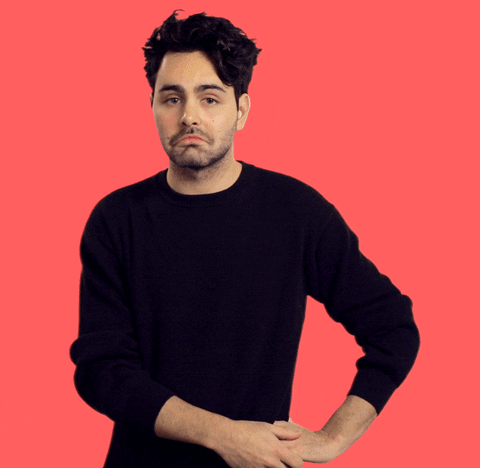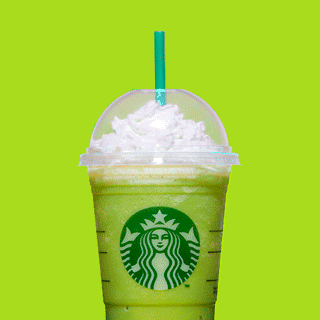- CAPTIVATED 🧠💰
- Posts
- Make it a Large for Just $1? 🧠
Make it a Large for Just $1? 🧠
The Sneaky Psychology of Nudging & Upselling That Makes Us Say Yes

Introducing Roku Ads Manager: CTV Ads Made Simple
Reach viewers where they’re already engaged on the big screen
Run ads on top ad-supported streaming channels
Get started today for as little as $500
Today’s Issue: Make it a Large for Just $1?: The Sneaky Psychology of Nudging & Upselling That Makes Us Say Yes
You're at a coffee shop ordering your go-to latte, and just as you’re about to pay, the barista asks, “Want to make it a large for just $1 more?”

Needing allll the coffee possible for the morning transformation haha
Or you’re checking out online, and a pop-up suggests adding that last-minute item for “only $2.99 more”?
Next thing you know, you’re saying yes without even thinking about it.
That’s the power of nudging and upselling—and it’s more than just clever suggestions. It’s a strategic blend of psychology that makes us feel like we’re getting more with just a tiny bit of extra effort.
Let’s break down how it works to sell more products with just small, subtle moves, in this second installment of our ‘Yes, Yes, Yes’ series (Read Part 1 here).
🪝 HOOKED: Everyday ‘Nudging’ You’ve Probably Fallen For
Let’s face it—we’ve all been nudged to buy a little extra without even realizing it. Here’s some classic Nudging you’ve probably experienced:

• “Only 3 Left!” Alerts on Shopping Sites: These notifications create a sense of scarcity, nudging us to act fast before it’s too late.
• “Would You Like to Make it a Combo?” at Fast Food Places: This classic nudge suggests an easy, value-packed upgrade, making it feel like a practical choice.
• “Add These to Your Cart?” Suggestions on Shopping Sites: Amazon and Target often suggest related items to what you’re buying, creating a nudge that makes adding to your order feel natural and convenient.
• “Earn 2x Points!” Loyalty Program Reminders: When we see messages like “Earn 2x Points on This Purchase,” it nudges us to buy a little more just to reach that next reward or milestone. Sephora does this well.
• “Because You Watched…” Recommendations on Streaming Platforms: Netflix and Spotify suggest shows, movies, or playlists based on what we’ve watched before, nudging us to explore new content and keep engaging longer in their app or service.
• *BONUS*: Can you spot the nudging in our Partner, Roku’s ad (scroll to the top!)?
🧠 BRAIN GAIN: The Brain Science and Consumer Psychology of Why Nudging Works
When we’re offered something extra—a larger size, a small add-on—our brains have a tough time refusing.
It’s not because we’re weak-willed, but because nudges and upsells work directly with how our brains make decisions.

Here’s why it sticks:
🤑 Loss Aversion: You know that feeling of wanting to get the most out of every dollar? That’s loss aversion kicking in.
When an upsell feels like it offers better value, our brains don’t see it as “extra spending”—instead, it feels like getting more without losing out.
So, that extra dollar to make it a large size suddenly sounds like a smart upgrade. Even if we didn’t plan to, it feels almost wrong to skip it.
⚓️ Anchoring: Once our brain has settled on a value for something, everything else gets measured against that original value (anchoring).
When you’ve already mentally locked onto the original price as your baseline, any add-on that feels like a deal next to it, becomes easier to say yes to.
It’s how a $5 add-on to a $50 purchase suddenly feels tiny by comparison, so we naturally agree without a second thought.
🤔 Endowment Effect: So once we start picturing ourselves with the item or upgrade, our brain begins to treat it as if it’s already ours (endowment effect).
By just imagining ourselves with the larger coffee or the add-on in our cart, we’re already mentally forming an attachment.
And, naturally, turning it down now feels like we’re losing something.
😎 Cognitive Ease: When it’s easy to add that extra item, our brain leans into cognitive ease—the choice that feels natural, simple, and even a little rewarding.
So, agreeing to these small nudges feels smooth and seamless, like the obvious thing to do.
Together, these principles layer up to make each nudge and upsell feel like a smart move, even if it wasn’t something we planned on.
💰️ PSYCHOLOGY IN SESSION: How Starbucks Masters Nudging
Starbucks has turned nudging into an art form, especially with how they suggest upgrades and add-ons to enhance your experience.

Think about it: You’re standing at the counter, ordering your usual coffee, and the barista casually asks if you’d like to make it a grande for just a little more. It feels like a low-cost way to get more coffee, so it’s easy to say yes.
Then, you see all those customization options—extra shots, flavor syrups, even a sprinkle of vanilla cold foam. By displaying these extras right on the menu, Starbucks taps into the endowment effect – once you picture that perfect, customized coffee, it’s hard to resist adding a little something to make it your own.
Starbucks also loves to suggest food pairings with your drink. When you’re ordering a coffee, they might nudge you toward a breakfast sandwich or a pastry.
This nudge appeals to loss aversion—you don’t want to miss out on a complete experience—and it’s also designed to feel like a thoughtful suggestion rather than a hard sell.
And since Starbucks is so good with personalization, these upsells feel like they’re adding value to your routine, not just bumping up your tab.
Starbucks offers a masterclass in how to use subtle nudges to drive engagement and increase sales without pressuring customers.
Each suggestion feels like a natural enhancement, making it easy for customers to say yes again and again.
⚖️ PULSE CHECK: How to Outsmart Nudges as a Consumer
Nudging is everywhere in our daily lives. These simple tips can keep you on track, even when companies use clever nudges to make extras look tempting.
1. Pause Before You Add: When you see an upsell, take a quick mental check and ask, “Will I use this?” That second can help you resist the impulse.
2. Do the Comparison Test: When an add-on seems like a deal, ask yourself if you’d buy it alone at the same price. This keeps you from adding items just because they look “small” next to a larger purchase.
🚩 DISTRESS SIGNAL: Signs You Might Need to Add Some Nidging to Your Products or Business
Curious if nudging could help you improve engagement and sales? Here are some tell-tale signs that adding a few subtle nudges could make a difference:
• Customers Don’t Often Choose Add-Ons or Upgrades: If you’re seeing low engagement with your existing Yes Ladder, add-ons, or upgrades, nudging could help frame these extras in a way that feels more helpful and valuable, making it easier for customers to say yes.
• Low Average Order Values: When your average order size isn’t where you want it to be, introducing nudges for complementary items or size upgrades can help customers see added value without feeling pressured.
• Slow Conversion Rates in Your Sales Funnel: If customers are hesitant to move from browsing to buying, well-placed nudges can create a smoother journey by highlighting easy first steps or quick add-ons that increase commitment and interest.
• High Cart Abandonment Rates: When customers often abandon their carts, nudges like small discounts, reminders, or personalized suggestions can encourage them to follow through.
Soo, how should you start nudging? Funny you should ask…
📈 MAKE IT STICK: How to Nudge & Upsell the Smartest Ways to Sell More
By designing your upsells with brain science and to feel helpful, you can increase your sales without making customers feel pressured.
Research from McKinsey has shown that nudging tactics like upselling can increase revenue by as much as 30%, and for existing customers potential revenue can increase by up to 70% — captivated indeed.

Here’s how to make sure your nudges are hitting the right spots:
1. Make the Upsell Feel Like a Win:
Offer small, value-packed add-ons at a low price.
Customers are more likely to go for it if it feels like an easy win.
Keep the upsell cost low, so they feel they’re getting more for less—using anchoring and loss aversion for that easy yes.
2. Create Bundles to Increase Value Perception:
Group related services or features together at a slight discount. This makes customers feel like they’re saving, and bundling psychology kicks in.
People see the set as more valuable than each part alone, so they’re more likely to add it to their purchase.
3. Use a “Limited-Time Add” at Checkout:
Offering an exclusive discount on an add-on for first-time buyers can create a sense of urgency.
By tapping into scarcity bias, customers feel they have a unique opportunity to get something extra, which encourages them to act fast.
4. Personalize Your Upsell Recommendations:
When possible, suggest upsells based on past purchases or preferences.
Tailoring the upsell feels helpful and relevant, rather than random.
Personalization taps into our desire for ease, and it shows customers you’re paying attention to what they actually want.
🛋️ COUCH CONCLUSIONS: Quick Takeaways for Captivating & Converting
Nudging and upselling make customers feel they’re getting a good deal with little extra effort.

With the right positioning, you can make your offers feel like a natural choice.
Try creating bundles, using small add-ons, and personalizing recommendations to give customers a better experience while improving your sales.
Stay tuned for more tips that keep your audience and customers captivated using the psychology of spending and selling and consumer behavior. I’m here to help you sell smarter, make more, and grow your products and business the smartest, simple way.
P.S. — Did you figure out how our Partner Roku used Nudging in the ad at the top of this issue?
Stay great, captivate, and sell smarter! 🧠💰️
👋 Until next time,
Profit Nic

